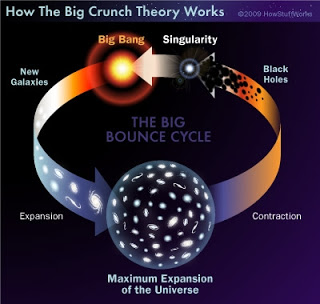Many theoretical physicists say that the Universe will come to an end between 2.8 billion to 22 billion years from now. Other experts even believe that it is already starting the process towards its ‘final exit.’ But, what actual demise awaits our Universe? Well, like most matters in space, astronomers can’t agree on its ultimate fate, resulting in different theories or predictions about its impending doom.
The first theory, the Big Rip, claims that the Universe will meet its end 22 billion from now. As the Universe continues to expand, the pull force will get relatively stronger and overpower the gravity it has. Thus, it will rip galaxies, stars, black holes, moons, and the planets.
Earth, and all the living beings having it as its refuge, will gradually melt into radiation, be ripped apart, or disintegrate itself. All that would be left in the Universe are separate and disconnected units.
Truth to be told, the Universe’s expansion was actually slow, thanks to its powerful gravitational force. However, its expansion suddenly increased, and experts linked with the impacts of dark energy. For this scenario to occur, the power of dark energy must overcome the Universe’s gravity for it to be forceful enough to tear single atoms.
Recently, the Tennessee professors Marcelo Disconzi, with help from Robert Scherrer and Thomas Kephart proposed a new approach on how the Big Rip can occur. In Disconzi’s model, he gave value to cosmic stickiness. While it is significantly ignored in the previous forms of theory, Disconzi’s hypothesis states viscosity is what can actually force the universe towards an extreme state and results in its violent demise as its expansion before infinite.
The second theory suggests that the Universe will end on a Big Crunch. Instead of continuous expansion, the Universe will come to a state where its growth will start to decrease through time. Thus, causing gravity to be the leading force and seemingly vacuum itself. The Universe will begin to shrink and cause the collision of planets, stars, moons, and galaxies. In the end, the Universe will collapse on itself.
To make it simple, the Universe’s growth will not continue forever. It will implode seemingly like a singularity as its expansion slows down, allowing a Big Bang to occur in reverse and turning it into the biggest black hole ever. Everything will be sucked in the said hole. Thus, the name Big Crunch.
The last theory is the Big Freeze, or what others regard the ‘Heat Death’ of the Universe. Among all three approaches, this hypothesis tends to likely happen based on what people know about the laws of physics and the current information we have about the Universe.
This theory believes that within the Universe, same with what typically occurs in isolated systems, entropy will start to rise. It is a thermodynamics principle that governs energy and states that the Universe will shift from order or to disorder in due course once it reaches its maximum value.
Once entropy is at its maximum level, experts suggest that heat will be scattered equally or uniformly. Thus, no more heat or usable energy can exist, and the Universe will meet its end from a ‘heat death.’ To make it simple, all mechanical motion will halt.
If Big Freeze happens, physicists believe that large volumes of gas would be diffused so willow that it prevents the formation of new stars. The Universe will seemingly be a limitless space wherein nothing happens since there is no more energy left to utilize.
As explorations and research in space and the Universe continues, more findings will lead us on figuring out how the Universe would meet its ultimate fate – an exciting yet unnerving thing to know.
More Readings:
Ultimate fate of the universe (Wikipedia)
Related Posts:
- What do black holes in the universe look like?
- Where had the Big Bang happened? Where is the center of the universe?
- How can space or the universe be both infinite and expanding at the same time?
- Why is the sky dark if there are billions of stars in the Universe?
- How do scientists know that dark energy is speeding up the expansion of the universe?

